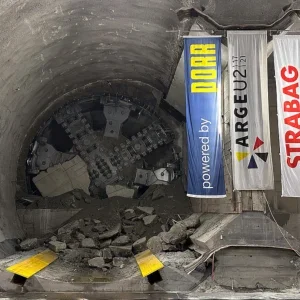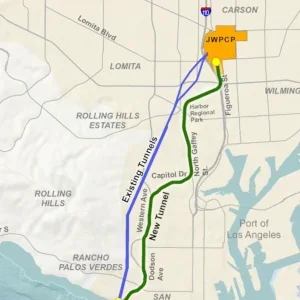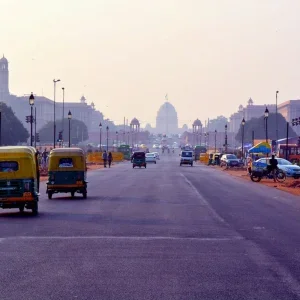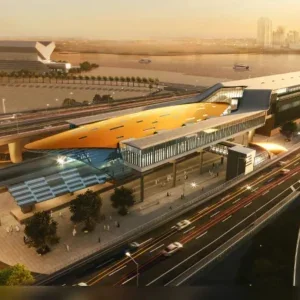Breakthrough has been achieved on the west bore of Holland’s US$725M, 6.6km long, twin-tube Westerschelde road tunnel, claimed at 65m below surface to be the world’s deepest bored tunnel under a river. The event sees the KMW JV completing the first tunnel only 2 months behind schedule on a project dogged by high pressures and squeezing ground.
The JV, consisting of Philipp Holzmann/Ways & Freytag/ Heijmans/BAM Infrabouw/ Voormolen Bouw, broke through on the west tunnel using an 11.3m diameter Herrenknecht Mixshield TBM at the end of January. Using an identical machine, the JV was expecting to holethrough the second bore (east tunnel) as T&TI went to press.
Boring started on the project’s east tunnel in summer 1999, with the second machine going to face three months later on the west tunnel. In early 2000, as the machines hit the tunnel’s deepest reach, some 1100m along the alignment, excessive pressures in squeezing glauconitic sands forced both TBMs to become trapped. Fears of distorted shield cans lead to the mobilization of a rapid rescue operation involving teams of divers working in slurry, up-sizing peripheral cutters on each TBM. The divers, from the North Sea Oilfields, were chosen to cope with the claimed world record working conditions of 6.5 bar pressure. Refurbishment of both machines, including the freeing of the trapped shields, was completed in summer 2000 resulting in a six-month delay.
Following the machines restart, both TBMs reported good progress, averaging 14 rings/day, with each ring consisting of eight 2m wide, 450mm thick trapezoidal segments and a key. The smoother rate of advance occurred through the areas self-supporting Boom Clay.
The twin two-lane road tunnels run from a reclaimed polder on the south side of the River Westershelde, to receiving caissons at Ellewoutsdijk on the north side. The JV is constructing the structure as a design and build contract and was hoping for an opening date of March 2003, this has been put back following the delays to November 2003. When opened the tunnels will link the province of Zeeland, previously separated by the Westershelde inlet, with the transport network to the north, increasing business activity within the region.







